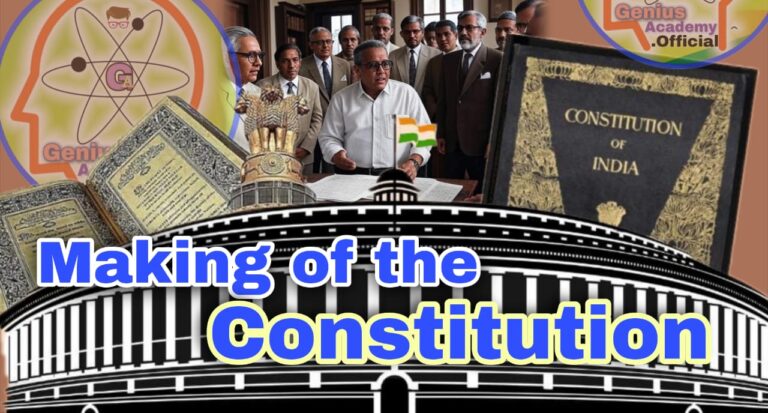Animal Husbandry in India: A Detailed Analysis
Animal husbandry plays a crucial role in India’s agriculture-based economy. The release of the Basic Animal Husbandry Statistics (BAHS) 2024 highlights India’s achievements, challenges, and the way forward in this sector. Let us explore the subject comprehensively.
What is Animal Husbandry?
Animal husbandry is the branch of agriculture dealing with the care, breeding, and management of domesticated animals like cattle, sheep, goats, poultry, and pigs. It ensures food security by providing:
- Milk, meat, and eggs as protein-rich food sources.
- Employment for around 8.8% of the Indian population, particularly in rural areas.
- A significant contribution of 16% to small farm households’ income.
Significance
- Nutritional Security: Supplies high-quality protein and other nutrients to millions.
- Economic Contribution: Contributes significantly to agricultural GDP.
- Employment Generation: Creates livelihoods, especially in rural areas.
- Allied Industry Growth: Boosts sectors like dairy processing, meat processing, and leather.
Key Highlights of BAHS 2024
Milk Production
- Total Production (2023-24): 239.30 million tonnes.
- Growth Rate: 5.62% over the last decade; 3.78% over 2022-23.
- Top Producing States:
- Uttar Pradesh (16.21%)
- Rajasthan (14.51%)
- Madhya Pradesh (8.91%)
Global Ranking: India continues to be the largest milk producer globally.
Egg Production
- Total Production (2023-24): 142.77 billion eggs.
- Growth Rate: 6.8% over the last decade; 3.18% over 2022-23.
- Top Producing States:
- Andhra Pradesh (17.85%)
- Tamil Nadu (15.64%)
- Telangana (12.88%)
Global Ranking: India ranks second globally in egg production.
Meat Production
- Total Production (2023-24): 10.25 million tonnes.
- Growth Rate: 4.85% over the last decade; 4.95% over 2022-23.
- Top Producing States:
- West Bengal (12.62%)
- Uttar Pradesh (12.29%)
- Maharashtra (11.28%)
Wool Production
- Growth Rate (2023-24): Marginal increase of 0.22% over the previous year but decline compared to 2019-20.
- Top Producing States:
- Rajasthan (47.53%)
- Jammu & Kashmir (23.06%)
- Gujarat (6.18%)
Challenges in Animal Husbandry
1. Disease Management
- Outbreaks like foot-and-mouth disease (FMD) and avian influenza reduce productivity.
- Poor disease surveillance and lack of veterinary services exacerbate losses.
2. Feed and Fodder Deficiency
- Quality Issues: Poor-quality fodder increases costs and reduces yields.
- Availability Gap: Deficiency of 11.24% in dry fodder and 35.6% in green fodder.
3. Low Productivity
- Indigenous breeds have lower productivity compared to exotic varieties.
4. Climate Change
- Impact: Rising temperatures and erratic rainfall patterns stress livestock health.
- Mitigation: Lack of adoption of climate-resilient practices.
5. Infrastructure Gaps
- Insufficient cold chains, storage facilities, and veterinary care limit growth.
Steps Taken by the Government
The Indian government has initiated several schemes to promote sustainable and efficient animal husbandry practices:
1. Rashtriya Gokul Mission (RGM)
- Aims to genetically enhance indigenous breeds for better productivity.
- Promotes conservation of native cattle.
2. National Livestock Mission (NLM)
- Focuses on:
- Livestock health improvement.
- Increasing feed and fodder availability.
- Supporting entrepreneurship in animal husbandry.
3. Dairy Processing and Infrastructure Development Fund (DIDF)
- Provides financial assistance for:
- Milk processing units.
- Value addition and marketing infrastructure.
4. Animal Husbandry Infrastructure Development Fund (AHIDF)
- Encourages private sector participation in setting up:
- Modern meat-processing units.
- Milk and egg production facilities.
5. Livestock Health and Disease Control (LHDC) Programme
- Strengthens:
- Disease surveillance systems.
- Vaccination drives for major livestock diseases.
6. Pashu Aadhaar
- Introduces unique identification for livestock to ensure:
- Efficient tracking.
- Better management of breeding programs.
Technological Interventions
1. Precision Farming
- Utilization of advanced tools to monitor animal health and productivity.
2. Artificial Intelligence (AI)
- AI-driven breeding programs enhance genetic selection and improve yields.
3. Climate-Resilient Practices
- Adoption of heat-resistant breeds and improved shelters for livestock.
4. Mobile Applications
- Government and private initiatives provide real-time advisory services to farmers.
Capacity Building and Farmer Training
Key Initiatives:
- Training in modern disease management techniques.
- Education on efficient fodder utilization and alternative feeding systems.
- Awareness campaigns about government schemes and subsidies.
Way Forward
To ensure sustainable growth in animal husbandry, India must focus on the following areas:
1. Policy Enhancements
- Introduce dynamic policies that address:
- Disease management.
- Fodder sufficiency.
- Climate adaptation.
2. Digital and AI Integration
- Strengthen e-governance in animal husbandry by promoting digital platforms.
3. Research and Development
- Invest in developing heat-resistant breeds and affordable vaccines.
4. Public-Private Partnerships
- Collaborate with private players to establish modern processing units and veterinary hospitals.
5. Promote Breed Conservation
- Strengthen the conservation of native breeds to preserve biodiversity.
6. Improve Infrastructure
- Build rural cold chains and storage facilities for perishable products like milk and eggs.
Key Statistics (2023-24):
| Metric | Total Production | Top State (%) | Global Ranking |
|---|---|---|---|
| Milk | 239.30 million tonnes | Uttar Pradesh (16.21%) | Largest Producer |
| Eggs | 142.77 billion eggs | Andhra Pradesh (17.85%) | Second Largest |
| Meat | 10.25 million tonnes | West Bengal (12.62%) | – |
| Wool | – | Rajasthan (47.53%) | – |
Government Schemes:
- Rashtriya Gokul Mission (RGM)
- National Livestock Mission (NLM)
- Dairy Processing and Infrastructure Development Fund (DIDF)
- Animal Husbandry Infrastructure Development Fund (AHIDF)
Challenges:
- Disease outbreaks.
- Feed shortages.
- Climate impact.
- Infrastructure gaps.
The Way Forward:
- Invest in research, digital technology, and AI.
- Strengthen public-private partnerships.
- Enhance infrastructure and farmer capacity.
By addressing these points, India can transform its animal husbandry sector into a global leader in productivity and innovation.
Conclusion
Animal husbandry serves as the backbone of rural livelihoods and food security in India. The Basic Animal Husbandry Statistics 2024 underscores the sector’s growth and challenges. By addressing bottlenecks such as disease management, fodder availability, and low productivity, and promoting initiatives like AI-driven farming and R&D, India can achieve a sustainable and self-reliant animal husbandry sector.
Source:- PIB
Daily Mains Practice Questions
UPSC (CSE) Mains Questions on Animal Husbandry Statistics 2024
General Studies Paper II – Governance and Social Justice
| [Q1.] Animal husbandry contributes significantly to rural livelihoods and nutritional security in India. Discuss the role of government initiatives in enhancing its productivity. (250 words) |
| [Q2.] Evaluate the effectiveness of schemes like Rashtriya Gokul Mission and Pashu Aadhaar in improving the health and productivity of livestock in India. (250 words) |
| [Q3.] How can public-private partnerships transform the animal husbandry sector in India? Analyze with examples. (150 words) |
| [Q4.] Discuss the role of technology, such as Artificial Intelligence and mobile applications, in addressing the challenges faced by the animal husbandry sector. (150 words) |
| [Q5.] Highlight the role of animal husbandry in achieving the Sustainable Development Goals (SDGs) in India. (250 words) |
General Studies Paper III – Economy, Agriculture, and Environment
| [Q6.] “India is the largest producer of milk globally, yet the sector faces challenges of feed deficiency and low productivity.” Critically examine. (250 words) |
| [Q7.] What steps can India take to mitigate the impact of climate change on its livestock sector? Suggest policy and technological solutions. (150 words) |
| [Q8.] Discuss the contribution of animal husbandry to India’s agricultural GDP and employment generation. Suggest ways to enhance its economic potential. (250 words) |
| [Q9.] With reference to the Basic Animal Husbandry Statistics (BAHS) 2024, analyze the regional disparities in milk, egg, and meat production in India. (150 words) |
| [Q10.] Assess the role of schemes like Animal Husbandry Infrastructure Development Fund (AHIDF) in enhancing rural livelihoods through value addition in animal-based products. (250 words) |
Ethics and Essay Paper
| [Q1.] “Animal husbandry is not merely a source of livelihood but also a symbol of India’s cultural and social fabric.” Discuss this statement in the context of modern agricultural practices. (1000-1200 words) |
FAQs on Animal Husbandry in India
1. What is the significance of animal husbandry in India’s economy?
Answer:—
Animal husbandry is a critical component of India’s agriculture sector, contributing significantly to rural income, food security, and employment generation. It provides a substantial share of the agricultural GDP and supports allied industries like dairy processing and leather.
2. What are the major challenges faced by the animal husbandry sector in India?
Answer:—
- Disease Outbreaks: Threaten livestock health and productivity.
- Feed and Fodder Deficiency: Creates cost inefficiencies.
- Climate Change: Affects livestock health and yields.
- Low Infrastructure Availability: Insufficient cold storage and veterinary facilities.
- Productivity Gaps: Indigenous breeds often underperform compared to exotic varieties.
3. How is the government addressing these challenges?
Answer:—
The government has introduced several initiatives:
- Rashtriya Gokul Mission: For genetic improvement of indigenous breeds.
- National Livestock Mission: Focused on health, fodder, and productivity enhancement.
- Dairy Processing and Infrastructure Development Fund: For processing and value addition.
- Livestock Health and Disease Control Programme: Strengthens disease surveillance and treatment.
4. What role does technology play in animal husbandry?
Answer:—
Technologies like Artificial Intelligence, mobile applications, and climate-resilient practices are being adopted to:
- Monitor animal health.
- Improve breeding techniques.
- Provide real-time advisory to farmers.
5. How does climate change affect animal husbandry?
Answer:—
Rising temperatures and erratic rainfall patterns stress livestock, reduce feed availability, and increase disease outbreaks. Adaptation measures include introducing heat-resistant breeds and adopting modern housing systems.
6. What are the top milk, egg, and meat-producing states in India?
Answer:—
Technologies like Artificial Intelligence, mobile applications, and climate-resilient practices are being adopted to:
- Milk: Uttar Pradesh, Rajasthan, and Madhya Pradesh
- Eggs: Andhra Pradesh, Tamil Nadu, and Telangana.
- Meat: West Bengal, Uttar Pradesh, and Maharashtra.
7. What is the Pashu Aadhaar initiative?
Answer:—
Pashu Aadhaar is a unique identification system for livestock that enables better tracking, management, and breeding programs.
8. How can public-private partnerships benefit the sector?
Answer:—
Such collaborations can:
- Enhance infrastructure like processing units and veterinary facilities.
- Promote research and development in breeding and disease management.
- Introduce advanced technologies for productivity improvement.
9. What is the contribution of animal husbandry to achieving SDGs?
Answer:—
Animal husbandry contributes to SDGs related to:
- Zero Hunger: By enhancing food production.
- Decent Work: By creating rural employment.
- Sustainable Agriculture: Through eco-friendly practices and biodiversity conservation.
10. How does animal husbandry impact rural livelihoods?
Answer:—
Animal husbandry provides steady income, employment, and nutrition to rural households, particularly small and marginal farmers, contributing to poverty alleviation and social equity.





